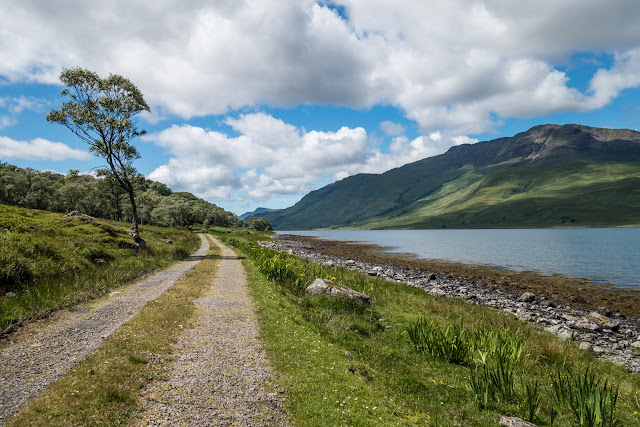Berwick-Upon-Tweed
Berwick-upon-Tweed sits at the most northerly tip of Northumberland, just 3 miles from the Scottish Border. A coastal town with four sandy beaches and beautiful riverside walks, Berwick is perfectly situated for a relaxing break and a haven for walkers and cyclists.
This peaceful town is a far cry from Berwick's turbulent past; Berwick’s great Elizabethan walls were built to keep invading Scots from entering the town. Apparently, artist L.S. Lowry was a regular visitor to Berwick but I saw no matchstick people on my visit!
There is no doubt that Berwick can claim the distinction of being the Border Town, as it has changed hands between England and Scotland thirteen times. Its history is inextricably tied up with the struggle for the Anglo-Scottish frontier. Berwick, with an English name meaning ‘Corn Farm or trading place’ began as a small settlement in the Anglo-Saxon Kingdom of Northumbria, in which it remained until the Battle of Carham of 1018 when it was taken by the Scots. From then on Berwick became a hotly disputed territory. In 1174 Berwick was retaken by England in a ransom following the failure of a raid into Northumberland by the Scottish king, William the Lion.
The town returned to the northern side of the border in the reign of Richard I (1189-1199), who sold it to obtain money for the Crusades. At the beginning of the following century Berwick returned once more to England, after Richard’s brother, King John sacked the town, but Berwick continued to change hands until 1482 when the town finally became part of England within which it still (technically) remains.
A Town Hall has stood on this site since at least the 16th century. Begun in 1750, this building stands majestically at the south end of Marygate. Until the 1830s, the Guild of Freemen governed civic affairs in Berwick from this building.
The Town Hall was the hub of the town's municipal life and is still used for Town Council Meetings. There is a public function room that was used as a courtroom, and the gaol which is located on the building's second floor and remains virtually unchanged since it was last used in 1849.
A quaint cobbled street
Archway over a cobbled road leading into the town, through the Elizabethan wall.
Berwick-upon-Tweed `Old Bridge`
The iconic Royal Border Bridge, built by Robert Stevenson and one of the finest bridges of its kind in the world, apparently!
Royal Tweed Bridge
Berwick's town walls are among its most famous piece of architecture and still stand strong today, hundreds of years after they were built. Berwick actually has two sets of walls, the first set (of which only fragments now remain), commenced by Edward I, was two miles long. The later Elizabethan Walls (which are still complete) are a mile and a-quarter in length. The ramparts completely surround the town, with four gates through which entry to the town is enabled.
Berwick's Elizabethan Walls are the only example of bastioned town walls in Britain and one of the best preserved examples in Europe. When built in 1558 - designed to keep out the marauding Scots who regularly laid claim to the town - it was the most expensive undertaking of England's Golden Age. It is only 2.5 miles from the border!
The walls were built to an Italian design and contained bastions which were designed to allow gunfire covering every part of the wall. Outside the curtain wall and bastions, there were wide water-filled ditches to deter potential invaders.
The Church of the Holy Trinity is a Church of England parish church in the center of Berwick-upon-Tweed and is a rare example of a church built in the Commonwealth era.
In 1641, King Charles I gave money to replace the dilapidated old church in Berwick. In the following year, however, the Civil War began. Despite this, more money was collected and stone for building the church was taken from the old Berwick Castle. In 1650 John Young of Blackfriars, a London mason, was contracted to build the new church, and by 1652 the church was complete. This makes it one of the very few churches to have been built during the Commonwealth of England; other examples include Ninekirks, Holy Trinity, Staunton Harold and St Matthias Old Church in Poplar, London.
The design of the church is based on that of St Katharine Cree in London. It has a side aisle on each side of the nave, and the arcades are of the Tuscan order. The church was built with no chancel, altar, organ, tower or bells. However the church interior was surrounded by galleries on all four walls.
In 1660, two years after the Restoration of the Monarchy, John Cosin, Bishop of Durham, consecrated the church. He demanded that a chancel should be built at the east end to accommodate a communion table. However, this was not done until 1855 when the present chancel was built and many original Gothic windows were redesigned in the Classical style. The 1855 west window is particularly fine and includes 16th- and 17th-century Flemish roundels formerly in the private chapel of the Duke of Buckingham at Canons Park, Middlesex.
Well it is warm sitting here!. Seen in the car park near our vehicle.














Comments